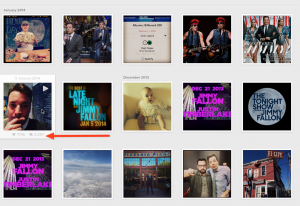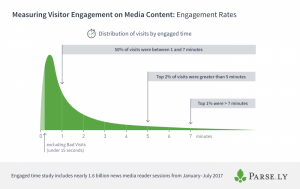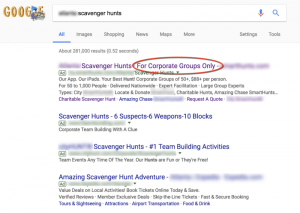Columnist Kerry Jones shares industry benchmarks for content marketing success based on actual results in 15 verticals.
 Whether you’re just getting starting with a content marketing strategy or you’ve been at it for a while, determining what success looks like can be tricky.
Whether you’re just getting starting with a content marketing strategy or you’ve been at it for a while, determining what success looks like can be tricky.
Managing expectations about what your industry can achieve with content is crucial. For example, if you’re creating content for a universally loved topic, like travel, your content is probably going to have greater potential to achieve a lot of visibility than, say, content from a B2B software company.
So just how high should you set the bar for content about your vertical?
My team at Fractl recently looked at a selection of more than 340 of our past client projects to set benchmarks for content performance by industry. We categorized the campaigns into 15 different verticals:
- Health and Fitness
- Travel
- Education
- Entertainment
- Drugs and Alcohol
- Politics, Safety, and Crime
- Sex and Relationships
- Business and Finance
- Science
- Technology
- Sports
- Automotive
- Home and Garden
- Pets
- Fashion
We analyzed each project’s engagement levels (the number of publisher features, or placements, and social media shares), as well as characteristics of the content.
A look at content performance by vertical
Our average campaign earned 90 placements and 11,832 social shares, but as expected, those numbers changed quite a bit when we segmented the content based on vertical.
Below is a breakdown of the average campaign performance for each vertical.

Health and Fitness content was by far our top-performing vertical, with a campaign average of 195 placements and 62,621 social shares. Drugs and Alcohol and Travel content rounded out the top three, respectively.
It’s no doubt the top three verticals of Health and Fitness, Drugs and Alcohol and Travel performed well due to universal appeal. Each of these topics interests a wide portion of the population, making it easier to catch the attention of a variety of publishers and audiences.
Niche verticals, like Automotive and Fashion, saw less success, likely because these categories have a more limited audience, which makes it more difficult to get a wide range of publishers to cover content around these topics.
What types of content worked best in each vertical?
We noticed certain content formats and data sources worked best in certain niches. Here’s a snapshot of what stood out about our top campaigns in each vertical.
Automotive
Social media data proved popular in our auto-focused campaign. This tells us audiences wanted to see how others were talking about their cars online. More than half of our most successful auto campaigns featured data from social media.

Business and Finance
People are inherently curious about others’ wealth. Our most-shared content in this vertical featured rankings and comparisons.

Drugs and Alcohol
Finding interesting correlations or stories in existing datasets can prove popular in this vertical — the majority of top campaigns used curated data.

Education
Social media data and interactive elements were present in our most successful education campaigns.

Entertainment
Creating content that speaks to passionate fan bases helps spur engagement in this genre, since raving fans are likely to spread great content about their favorite TV shows, movies and celebrities.

Fashion
Tutorials and how-to guides work well with fashion-conscious audiences. Our most successful fashion content helped solve a problem for the audience.

Health and Fitness
Visual assets showing high contrast, such as side-by-side images, proved popular in the Health and Fitness vertical.

Home and Garden
Pop culture-related and timely angles helped attract attention in this niche.

Pets
Examining the social aspects of pet ownership was a big hit in this vertical. We also saw success with pets-focused content that had a geographic angle.

Politics, Safety, and Crime
Our most-shared content in this vertical capitalized on a trending topic by looking at how people were discussing it on social media.

Science
Accessibility was key in this vertical. We had the most success by tying in pop culture icons or using interactive experiences to decode complicated topics.

Sex and Relationships
People are curious about what everyone else is saying when it comes to sex. Our most popular content in this vertical tapped into social media data to uncover how people were discussing topics related to sex and relationships.

Sports
Since teams and fans are so closely tied to specific cities and states, it’s little surprise that our top sports-related content featured maps.

Technology
Comparisons and morphing GIFs were commonly featured in our most successful tech content.

Travel
Our most popular travel campaigns tend to feature comparisons or data pulled from social media.

Consider branching outside of your vertical
If you’re in a niche vertical that doesn’t have wide appeal on its own, and your goal is to attract a lot of attention, creating content around ideas that are related to, but not directly about, your industry is a surefire way to appeal to a wider audience. At Fractl, we typically see greater success for our clients in niche industries when they broaden the content’s focus beyond their industry. We call these tangential ideas.
Maybe you’re a software company targeting small business owners. Instead of making your content about software, you can brainstorm around other topics that business owners would care about. There are quite a few avenues you could take. As one example, content about improving productivity and efficiency would appeal to your target audience plus the broader public.
If you’re interested in trying this approach, here’s one key piece of advice: Make sure your idea topics are still relevant to your target audience, in addition to a larger audience.
At the end of the day, your content should connect with your target market, so creating content that’s completely unrelated to their wants and needs is not going to achieve the desired outcome.
Some opinions expressed in this article may be those of a guest author and not necessarily Marketing Land. Staff authors are listed here.
Marketing Land – Internet Marketing News, Strategies & Tips
(87)







